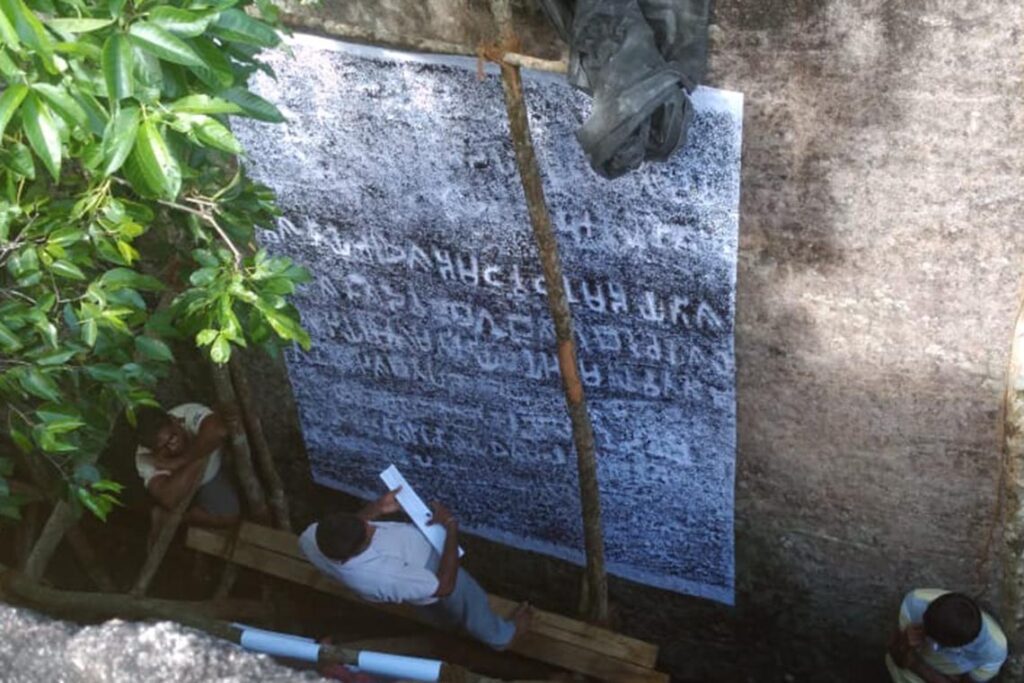The Department of Archaeology’s Epigraphy and Nanoscience Division is facing criticism for attempting to interpret the Dimbulagala Stone Slab Inscription without seeking expert assistance, resulting in an inability to provide an academic interpretation. The inscription, considered the largest ever found in Sri Lanka, has sparked controversy as different groups make varying claims about its significance.
The team claimed to read the inscription’s letters but struggled with academic interpretation, raising concerns about the lack of collaboration with experienced scholars. The Department of Archaeology faced internal sources’ criticism for attempting to claim credit for reading and publishing the inscription without seeking guidance from academic experts. Scholars, including Professor Karunasena Hettiarachchi and Professor Raj Somadeva, were reportedly disregarded in favor of an unscholarly approach.
The team pasted a copy of the inscription in Weliveriya Sri Purvarama Vihara, bypassing the Department of Archaeology, but failed to decipher its meaning. Acting Assistant Director of Epigraphy and Numismatics rejected the assistance of respected scholars, resulting in a delay in providing an official interpretation. Dr. Malani Dias, a former scholar in the department, reportedly read some new words but could not contribute significantly due to illness. The Acting Director General of Archaeology inquired about the delay, questioning the Acting Assistant Director regarding the failure to meet the three-week timeframe for interpretation.
The inscription comprises 10 lines, with one line measuring 57 feet. The first two lines have suffered damage, containing personal names and unique words not found in other cell inscriptions. The controversy has led to concerns about the mismanagement of a significant national heritage, with accusations of a national crime against the responsible group in the Department of Archaeology. The lack of an official interpretation has allowed misconceptions about the inscription to spread in society, contributing to the criticism faced by the department.
